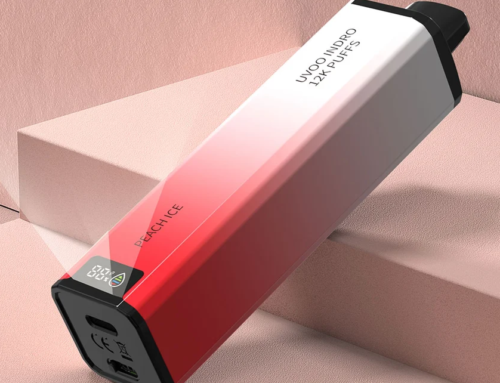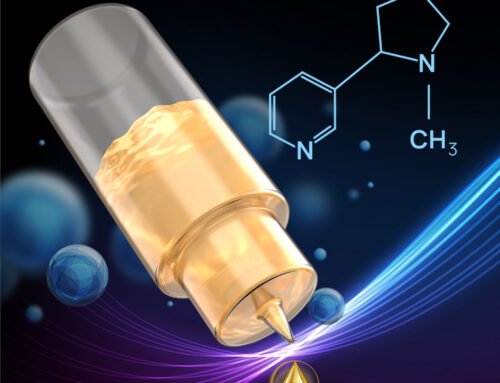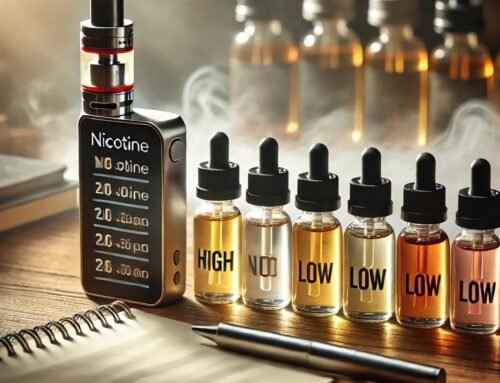Vape Device Overheating: Causes and Safe Solutions
Vape devices have become a popular alternative to traditional smoking, offering a wide range of flavors and the convenience of portability. However, a common issue many vapers face is the overheating of their devices. Overheating can be not only frustrating but also potentially dangerous. In this blog, we will explore the causes of vape device overheating and provide practical solutions to safely address the issue.
QUICK LINKS
- 1. Causes of Vape Device Overheating
- 2. How to Safely Solve Overheating Issues
- 3. What to Do if Your Vape Device Overheats
- Conclusion
1. Causes of Vape Device Overheating
Understanding the underlying causes of overheating is key to preventing it. Several factors can contribute to this issue:
a. Chain Vaping (Prolonged Use):
Vaping continuously for extended periods, known as chain vaping, can cause your device to overheat. This is because most vape coils and batteries need time to cool down between puffs. Without that cooling period, the heat generated by constant use can build up.
b. High Wattage Settings:
Many advanced vape devices allow users to adjust the wattage for a more intense vaping experience. However, using excessively high wattage settings can cause the coil to produce more heat than the device is designed to handle, leading to overheating.
c. Faulty Coil:
A damaged or worn-out coil can be a major culprit behind overheating. Coils that are past their prime may not properly regulate heat, causing the device to become too hot during use.
d. Poor Ventilation:
Vape devices are designed with vents or airflow channels to allow heat to escape. If these airflow channels are blocked by dirt, lint, or other debris, the heat generated inside the device can get trapped, leading to overheating.
e. Battery Issues:
Old or damaged batteries can also cause overheating. If the battery is overused or has a faulty charge, it may produce excess heat, putting both the user and the device at risk.
2. How to Safely Solve Overheating Issues
Now that we’ve identified the common causes of overheating, let’s dive into how to solve these issues safely.
a. Avoid Chain Vaping:
One of the simplest ways to prevent overheating is by taking breaks between puffs. Give the coil and battery time to cool down, and avoid using the device for prolonged sessions. Most vapes are designed for moderate use, so pacing yourself can significantly reduce overheating.
b. Adjust Wattage Settings:
If you’re using an adjustable wattage device, try lowering the wattage to a level that won’t overstress the coil. Find a balance where you can still enjoy the flavor and vapor production without putting undue stress on the device. Experiment with different settings to identify the sweet spot for your vape.
c. Replace the Coil Regularly:
Over time, vape coils degrade and become less efficient at handling heat. Replacing the coil regularly, especially if you notice burnt flavors or poor vapor production, can prevent overheating. Most manufacturers recommend changing coils every 1-2 weeks depending on usage.
d. Clean Airflow Vents:
Ensure that your device’s airflow vents are free from blockages. Regularly clean the device, especially around the air intake areas. Use a cotton swab or a soft cloth to remove any dust, debris, or residue that might be obstructing proper ventilation.
e. Check the Battery Condition:
Always use batteries that are in good condition and recommended for your device. If your battery is damaged or old, it’s time to replace it. Also, make sure you’re using the right type of battery for your vape, as different devices have different battery requirements. Never use a damaged battery, and avoid exposing it to extreme heat.
f. Avoid Overcharging the Battery:
Overcharging can lead to battery stress, which in turn can cause overheating. Make sure to unplug your vape device once it reaches full charge, and try not to leave it charging overnight. Many modern vape devices come with safety features to prevent overcharging, but it’s always better to err on the side of caution.
g. Use the Correct E-Liquid:
Thicker e-liquids, particularly those with higher VG (vegetable glycerin) content, can cause coils to work harder, generating more heat. Make sure the e-liquid you’re using is suitable for your device. If you notice your device overheating frequently, try switching to a different e-liquid with a more balanced PG/VG ratio.
3. What to Do if Your Vape Device Overheats
If your vape device starts to overheat, follow these steps to ensure safety:
- Stop Using the Device Immediately: Continuing to vape on an overheated device could cause further damage or even lead to more serious issues, like battery malfunction.
- Turn Off the Device: Powering down the device will prevent further heating and give the battery and coil time to cool.
- Allow Time to Cool: Place the vape device in a cool area, away from direct sunlight, and give it time to cool down before attempting to use it again.
- Inspect the Device: Once it has cooled, check for any visible damage to the coil, battery, or airflow channels. If you’re unsure about the state of the device, consult the user manual or contact customer support.
- Replace Components if Necessary: If the coil or battery is damaged, replace them with new, compatible parts before using the device again.
- Contact a Professional if Needed: If the issue persists despite your efforts, it might be best to take your device to a professional vape shop or contact the manufacturer for further assistance.
Conclusion
Vape device overheating is a common issue, but with the right care and precautions, it can be avoided or resolved safely. Regular maintenance, mindful usage, and attention to battery health are all crucial in preventing overheating. By understanding the causes and taking proactive measures, you can enjoy a safer and more enjoyable vaping experience.




